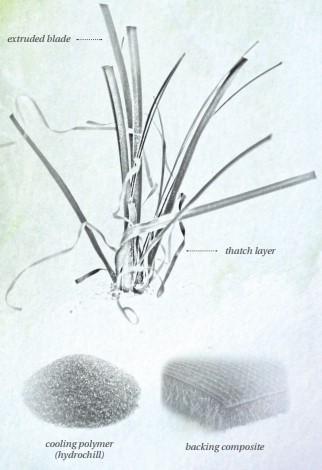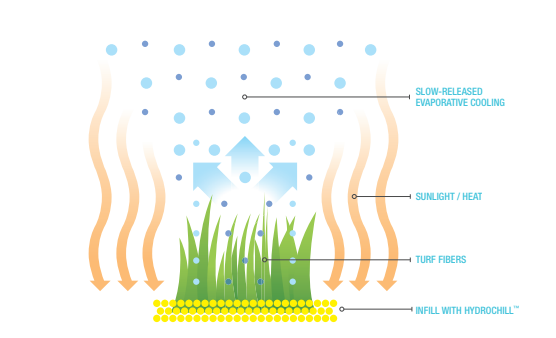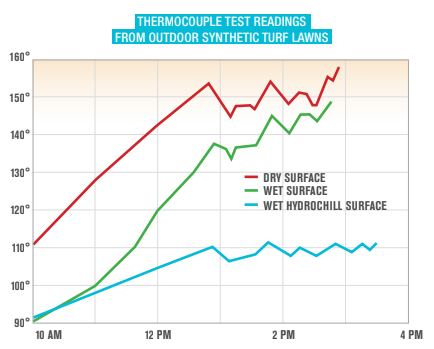It’s more than just synthetic grass.
Turf Types
Have you ever been on artificial turf?
Did you think about what goes into the manufacturing of synthetic turf?
It’s fine if you haven’t. Most people probably haven’t.
But, if you are wanting to learn more, here’s a guide for you. Synthetic turf can be created with several materials such as nylon, polyester, or combination of both.
Check out the pros and cons of each fiber type with our comparison guide.
NYLON
Pros
- While denier and yarn composition affect durability, nylon is usually stronger in direct comparison.
Cons
- More vulnerable to expansion and contraction.
- Fades when exposed to sunlight.
POLYESTER
Pros
- Less susceptible to expansion and contraction.
- Polyester is less susceptible to UV than nylon.
Cons
- Not as durable than nylon per pound.
NYLON & POLYESTER
Pros
- Has water-resistant properties.
- Resistance to tearing.
- Less susceptible to saltwater corrosion and mildew.
Cons
- Nylon and polyester are both flammable. However, each responds differently to fire; nylon melts before it burns, polyester melts then burns.
It’s Not Only About Fiber
There are quite a few artificial grass companies marketing their products out there. But, we have a little secret to let you in on. One of the most essential elements of synthetic grass is not just the source of the fiber (grass blades) is composed of. Turf is a system that has to be installed correctly for proper performance. The following are just a sampling of ingredients that will differentiate a low-quality synthetic turf from a high-quality turf.
BACKING
The backing is composed of two layers and then a urethane coating is applied. These elements are vital as they secure the fibers (grass blades) in place, allow water to flow through, and prevent abrasion from the base material.
INFILL
Infill is an important component. It adds time and labor but is the finishing touch that makes sure your warranty is good and your solution performs well. Infill adds ballast, which makes sure the turf is has no wrinkles and dimensionally secure. Infill adds additional protection to the yarn and backing, assists drainage, and ensures a proper footing.
YARN FIBER
Yarn fiber is comprised of resins manufactured to solve the competing challenges of softness and durability. Fibers are available in a number of shades and combinations that allow your eye to see many greens. In addition, thatch may be added for realism.

Keeping Things Cool with Science
We love one product in particular, HydroChill™, our patented evaporative cooling technology.
Sweating is a natural form of thermoregulation known as evaporative cooling. Moisture evaporating from the surface of the skin yields a cooling effect. Likewise, HydroChill™ has shown the same ability to cool synthetic turf surfaces by working on the same principle. As turf surfaces are heated by solar radiation, moisture in the HydroChill™ turf is released. As the moisture evaporates, it leaves a cooler, more comfortable surface for the players.

An ordinary wet lawn will cause some cooling, but temperatures can rise rapidly and may become uncomfortably hot. In real-world applications, a HydroChill™ lawn has been shown to create a notable temperature differential. HydroChill™ has achieved 30° to 50° lower surface temperatures, based on actual lab and outdoor thermocouple testing, when compared to a typical synthetic turf system.

Less Work. More Play.
Southwest Greens isn’t just a product, it’s also a solution. A solution that requires notably less water each year, significantly reduces the impact on mother nature, and demands much less maintenance. All of which gives you the option of less work, more play.
